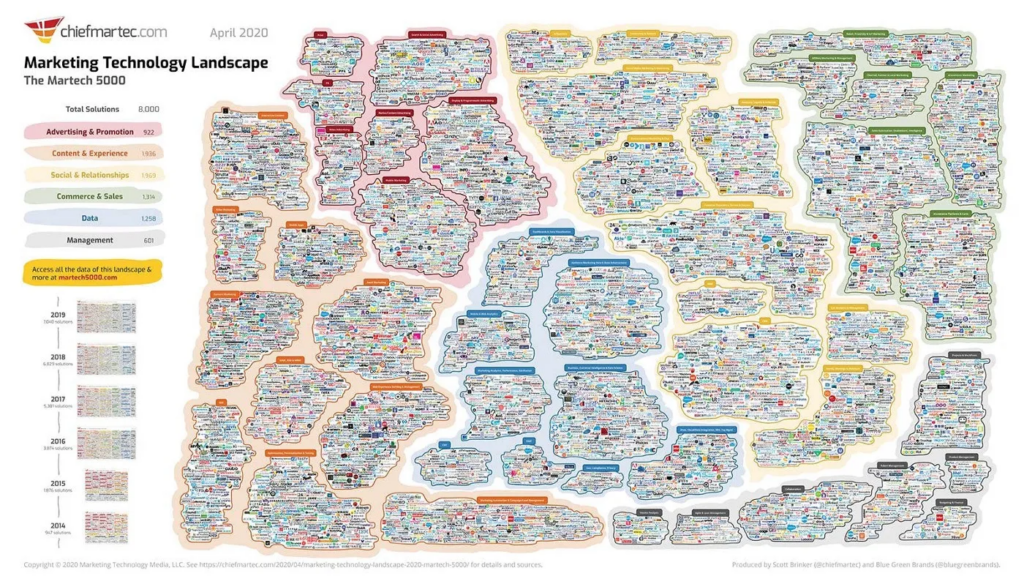One prominent issue that we have seen across across hundreds of engagements with some of the largest organizations in the world is a suboptimal, or worse, completely wrong approach to choosing Marketing Technology vendors to deliver on a specific capability.
The fundamental reason that approaches are often wrong is due in large part to an increase in complexity in MarTech platforms. At first, technology platforms were neat-ish and fit into their square boxes of capability. You had a content management system (CMS) that did exactly what you’d expect — manage content. If you wanted or needed a new CMS, the process of finding vendors, inviting them to an RFI/RFP process, and judging them based off of an organization’s requirements was straightforward.
What happens when a content management vendor becomes aware of the fact that, in addition to the core functionality of managing content, the CMS can also serve as a source of truth for content across an enterprise? They might decide to add intelligence to the content — presenting content to visitors based off of the data the organization is already capturing or even randomly “relevant” content for visitors. When this happens, the CMS competes directly against testing and optimization vendors — whether on an equal footing or not, that is not for us to discuss in this post. So the CMS vendor builds a few features, sends out a marketing presentation to inform their clients that they now provide testing and optimization, and then watches the confusion distribute itself throughout the organization.
And after that? The team that owns testing and optimization feels threatened or attacked. They reach out to experts on the team and outside consultants to debunk this heresy. There is no way that a CMS can beat their chosen testing and optimization vendor. At the end of the day, no matter which side “wins,” the fact that the debate is even happening starts to sow a level of distrust between the teams.
This is a cycle we see over and over when a vendor makes a claim that they have built features or added a new capability that feels as if it overlaps with another established vendor. This is the reality we live in with such a complex marketing ecosystem.

Without a trusted team of vendor-neutral marketing technology experts either internally or externally, organizations allow the tail to wag the dog. The tail in this case are the vendors whose job is to sell and promise — or promise and then build quickly with hopes of selling. By doing their jobs well, they will confuse and disrupt your teams unless you are armed with strong partners with a clear vision.
What is the best way to develop that vision? Develop company-centric use cases. Organizations spend so much time socializing their vision with the external world (outside of their four walls) that they rarely develop similar messaging internally that outlines how they want to do business. All companies want to be data-driven, customer-centric, and digitally transformed. But what detail contributes to that vision? These are certainly some good buzzwords for investors to read in a deck, but what about the front-line managers and anyone working on an RFP? Do they understand how this might affect their strategic initiatives? If not, the organization has some work to do before they even think about adding or expanding upon existing capabilities with a MarTech vendor.
Nine times out of ten, when a company can articulate use cases they want to deliver in the future, these will typically be driven by a vendor’s roadmap — not their own needs. This vendor-driven (top-down) approach is wrong. Going this route means you are at the mercy of whatever feature is whispered in someone’s ear, or even worse, something fancy and eye catching is prioritized by an executive who is wined and dined at a conference.
You can set your company apart by taking a better, bigger picture approach — a vendor-agnostic MarTech stack implementation informed not by a sizzle reel, but instead by what your business is actually trying to do. Very simple to write, but incredibly difficult to achieve.





